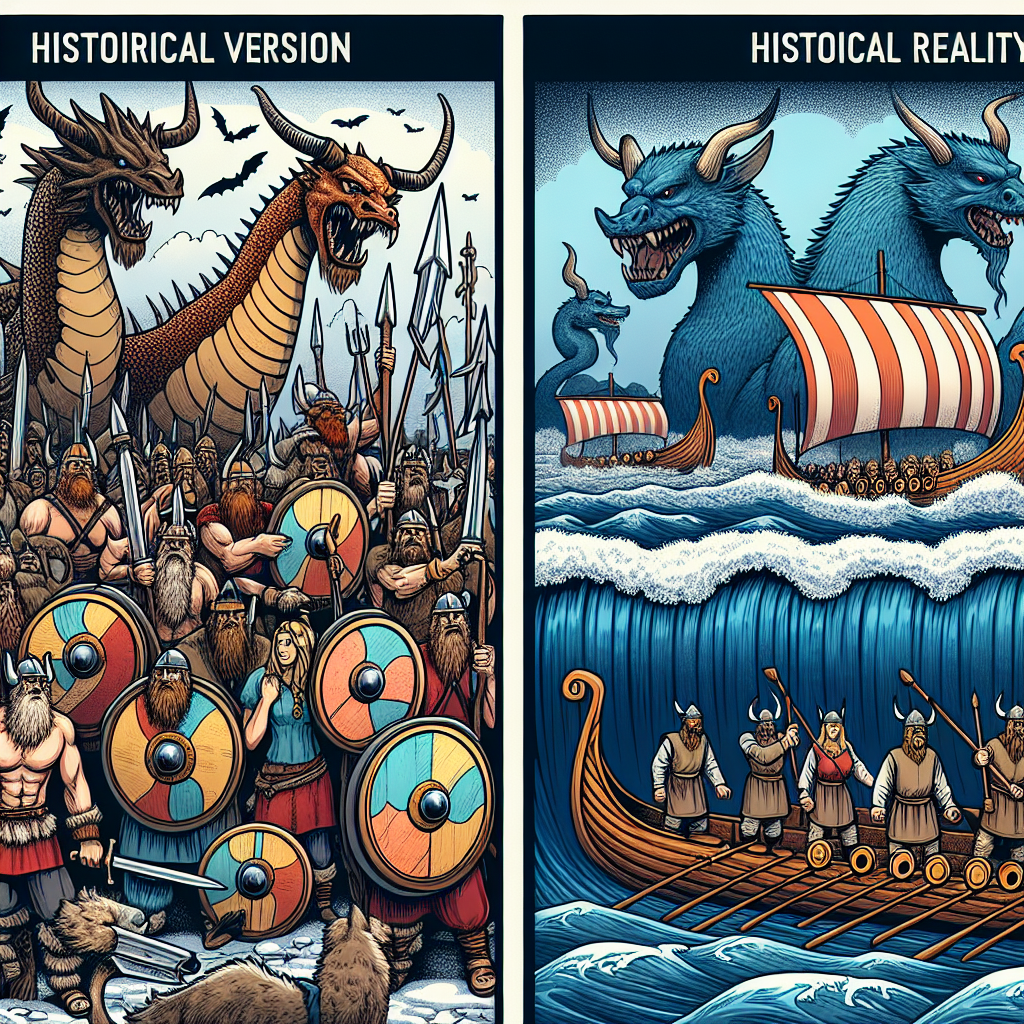The Real Lives of Viking Warriors: Myths vs. Reality
When we hear the term “Viking warrior,” most of us imagine burly men with horned helmets, brandishing axes, and sailing the high seas in search of plunder. Hollywood blockbusters and historical fiction have painted a dramatic picture of these Scandinavian seafarers. But how much of what we think we know about Viking warriors is grounded in reality, and how much is myth? Let’s embark on a journey to dive deep into the real lives of Viking warriors and separate fact from fiction.
Viking Appearance: Horned Helmets and Fearsome Faces?
One of the most enduring images of Viking warriors is that of the fearsome, horned-helmeted raider. However, historical evidence tells a different story.
Despite what costume shops and popular culture might have you believe, there is no archaeological evidence to support the idea that Vikings wore horned helmets in battle. In fact, it’s more likely that the first Viking warriors sported simple, functional helmets made of leather or iron. The idea of horned helmets actually stems from 19th-century artists and playwrights rather than actual Viking culture.
Viking Raiders or Traders?
It’s easy to label Vikings as ruthless raiders, but this portrayal oversimplifies their complex society. While it’s true that some Vikings engaged in raiding, many were also traders, explorers, and settlers. They established trade routes that spanned from the British Isles to Constantinople, and their voyages spread not just fear but also goods, innovations, and cultural exchange across Europe and beyond.
Beyond the stereotypical image of raiding parties, Vikings were highly skilled in navigation and shipbuilding. Their iconic longships allowed them to traverse open seas, riverways, and even shallow waters, making them unparalleled explorers of their time.
Viking Women: Warriors or Homemakers?
The role of women in Viking society is another area rife with misconceptions. Female warriors, often called “shieldmaidens,” occupy a significant place in Viking legends and sagas.
While evidence for the existence of shieldmaidens remains inconclusive, we do know that Viking women held more rights and responsibilities compared to their contemporaries in other parts of Europe. Women in Viking society could own property, request a divorce, and even participate in politics and trade. Some gravesites, like the famous Birka warrior, have revealed female skeletons buried with weapons, suggesting that the idea of female warriors might have roots in reality.
Viking Lifestyle: Constant Battle or Thriving Communities?
Many imagine Viking warriors spending their days in endless battle. However, Vikings were not fighting 24/7. Most of the time, they were engaged in much more mundane activities, like farming, crafting, and family life.
Viking communities were agriculturally based, growing crops like barley, rye, and oats. They raised livestock, fished, and practiced skilled craftsmanship. In fact, the majority of Viking warriors were likely farmers who took to raiding during specific seasons when agricultural work was less demanding.
Learning More About Vikings
If you’re fascinated by the complexities of Viking life and want to delve deeper into their history, exploring educational resources is a must. For a treasure trove of informative content, check out some of the best education channels on Telegram. These channels provide valuable insights, academic discussions, and the latest updates on historical research. Whether you’re a student, a history enthusiast, or just curious, these resources can guide your journey into the past.
Conclusion
The lives of Viking warriors were far more nuanced than the simple caricatures depicted in movies and TV shows. They were not just raiders; they were skilled traders, explorers, and community members with a rich and diverse culture. Understanding the real history of Viking warriors helps us appreciate their impact on the world in a much fuller context.
So, the next time someone mentions Viking warriors, you’ll know that the reality is far more intriguing—and grounded—than the myth. And for those eager to continue learning about these fascinating figures and more, there’s always a wealth of information waiting on educational platforms like Telegram.
Happy exploring, and may your quest for knowledge be as adventurous as the Vikings’ journeys!
